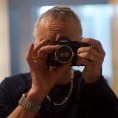Am I a lonely outlier
-
Recently Browsing 0 members
- No registered users viewing this page.
-
Similar Content
-
Lonely Clowns
By tappan,
- 4 replies
- 345 views
-
Lonely boat
By fotomas,
- 1 reply
- 245 views
-
Lonely Sentinel
By jaapv,
- 7 replies
- 434 views
-
- 1 reply
- 190 views
-
- 4 replies
- 279 views
-




Recommended Posts
Join the conversation
You can post now and register later. If you have an account, sign in now to post with your account.
Note: Your post will require moderator approval before it will be visible.